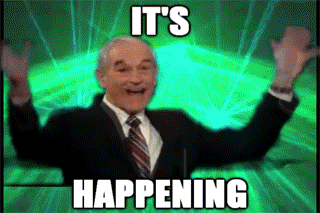
Maximum Comics
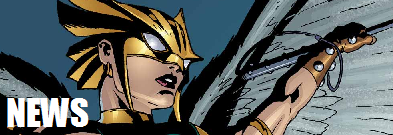
March 4th, 2015 - Game has launched! Game has launched, feel free to prepare your character sheets. GM staff includes: @Gowi, and @Sloth so PM if you need immediate communication if we are not present in OOC.
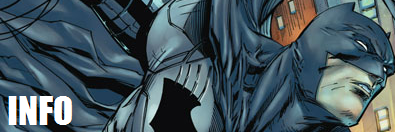
Welcome to Maximum Comics, an intoxicating land where creativity for creativity's sake can take priority and enable you to render stories and events you could only have dreamed of in all of your previous mundanity. In this universe, the mainstream continuities of DC or Marvel no longer apply; this is a world wholly built upon the ideas of players. Continuity that exists in this role-play is anything on the linked wiki in the information section and in the story above. We welcome you to a unique narrative opportunity to take any DC, Marvel, IDW, Image, or Mirage Comics character and re-imagine them in a way that makes them pleasurable for you to write unique and original stories with.
Whether you're one for emotional drama or a sucker for physical trauma, the vast range of characters available could fit any genre or any purpose you could reasonably imagine. Have a burning desire to write The Question as a hard-nosed police detective serving a hierarchy he doesn't care for? Maybe you have a unique take on The Whizzer you wish to explore. A concept in which Slade Wilson, not a mercenary but a successful military man, struggles to become President? The opportunities are endless.
As long as they have appeared in a canonical DC/Marvel/Indie tale on either the page or the screen they're free for refurbishment: here, the universe is yours to mold.
As a sandbox themed collaborative story, the keys to the DC and Marvel Universes are given to you—the player—but not without limitations or guidance. Unlike that of a linear or progression-themed collaborative story, the goal of a sandbox is to allow you to craft character arcs, NPC casts, and almost assistant GM decisions that don’t contradict the other rules. The style of role-play was explained to me as an “interactive multi-author fanfiction” and the idea of this sort of concurrent thing is apt. However interaction, much like any role-play, is the bread and butter of the game; we don’t shy away from interactions, world-scale gatherings, and so forth. My job in this role-play will be to set up events every so often but for the most part I will do the same thing as the players in setting up my stories.
JUSTICE LEAGUE PLAYERS - Throughout the first section of the role-play, we will be responsible with setting up our major battle with our enemies within “The Society” which is basically the Legion of Doom. If you’ve read ‘Tower of Babel’ or seen ‘Justice League: DOOM’ then you get the idea of what’s going to happen. Your major hero is going to be taken out of the equation (or nearly, as we heroes will survive inevitably) as this secret society makes their declaration of war on the superhero powers of the world. This will be called ‘Insurrection’ and is our first major arc. So if you plan on writing a member of the Justice League make sure to make their brutal takedown especially entertaining and emotive.

INTRODUCTION
During the early twentieth century the idea of “metahumans” and “superheroes” were an obscure fragment invented in the course of fantasy seen in early comic books. However, the origin of the reality of the nature of such things were not merely fantasy. Such origins came out within the Second World War when eventually it became evident that a new type of arms race had begun during the world war as the administration of Nazi Germany exerted their own research into theoretical science and mythological magic as if such things were obtainable to win the war in their favor. Amongst these scientists in the company of the German war machine included Doctor Albrecht Krieger, who on report had believed he was close to cracking the code on perfecting evolution as rumors hit that a German expedition had acquired the Spear of Destiny. A task force was initially set up by the United States government whilst working with the allied forces to combat this alarming threat under the guise that it was not propaganda.
The development of PROJECT REBIRTH alongside former German national, Dr. Abraham Erskine. The idea was to implement Erskine’s research alongside the United States resources to create a counterpoint to the increasingly dangerous faction within Nazi Germany—HYDRA. A young man named Steve Rogers becomes the sole recipient of the project as a Nazi infiltrator murders Erskine in hopes to end the projects ambitions before it even is started. Captain America was born and under the guise of OSS supervisor Terrence Sloan it becomes something that the world would never forget. However this would end up leading to a one-on-one entanglement between Captain America and HYDRA’s Red Skull which concluded with both of the men’s supposed deaths.
THE GOLDEN AGE
Captain America was lost, but the war was won. With the Nazi war machine devastated and dismantled it began a new era of prosperity and peace—or so was the blueprint that the world wanted to live by. However, much in life does not go according to plan; something proven to be evident as the remains of the hierarchy of Germany’s HYDRA organization skulked in the shadows waiting for their opportune moment to strike and take vicious revenge for not only the destruction of their utopia but also the murder of their leader, Johann Shmidt. This would cumulate in the death of the President of the United States in 1963 as the announcement of the return of the ‘true’ German regime was declared.
Terrence Sloan, who had worked in the OSS during the war and had specific experience with HYDRA was brought in to Washington to headline an investigation and defensive organization against the threat that nobody had answers to give to the former Vice President of the United States on how such a breach in operations could be possible. This organization would become known as SHIELD and would become one of the defining organizations of the late twentieth century as the times begun to change and HYDRA would covertly initiate their war with the United States. However, the nazi elite had far more in mind than simply the all-out attack on capitalism in the United States as they also enacted similar attacks within England, the Soviet Union, France, and Communist China. Behind the scenes SHIELD would work with the inner-workings of these governments to end HYDRA once and for all.
The fear of HYDRA was kept in the dark of the general public as the identity of a government agent by the name of Lee Harvey Oswald took the public blame for the incident, as if the public knew there was still a war with HYDRA and the Nazi elite that it would ruin their idyllic society. However, other problems would arise at home as the cover-up breathed success as other villains emerged at home such as scientists and profiteers such as Dr. Gerard Shugel, Henry King, Professor Thomas Morrow, and Cameron Mahkent. With SHIELD funneling most of their resources into the war against HYDRA, a different type of group emerged as civilians tasked themselves with defending truth, justice, and the American way. These heroes would include Jay Garrick, Alan Scott, Dr. Rex Tyler, Al Pratt, Charles McNider, and Ted Knight—the American public would know them as “The Justice Society”.
It was then years later that SHIELD had finally made progress on their mission overseas. After years of conflicts with HYDRA, the investigation leads them to the supposed headquarters of their enemy within Southeast Asia on the island of Madripoor. The battle turns costly and many agents are lost as the headquarters is destroyed with the leader of HYDRA supposedly killed in action as well. Director Terrence Sloan seems relieved as his war had finally ended. This leaves SHIELD to be repurposed on fighting world terrorism and covert threats in general, rather than HYDRA specifically.
The inspiring nature of the Justice Society of America was not permanent—which was made abundantly clear by the late seventies when the remaining founding members put it up to a vote to disband and relegate to retirement. Many of the members had gotten worn out, the ingenious “supervillains” they had faced in battle were mostly defeated and relegated to their time in prison or the graveyard, and political sentiment changed from being supportive to being critical when Senator Arthur Reeves of New Jersey claimed they were nothing but narcissistic vigilantes who needed to be ‘registered’ with the government. Such precedents about the society led to their announcement of disbandment and ushered in a new era that soon would ask one question: “Why?”
REEMERGENCE
The last two decades of the twentieth century reflected on the end of the “golden age” as the shades of black and gray painted the eighties as one of discomfort. For if the years gone by were ones of idyllic paradise these were ones of the direct opposite. This would become obvious as the tragedies of the Wayne Estate erupted in Gotham City, and many others perpetuated this tone of the era as drugs and finance hit a terrible precedent. The costumed vigilante would be missed by many, especially those who lived in small rural towns and suburban subdivisions as the “American Standard” began to change. It was then that the Mutant Scare occurred when scientists discovered a metagene that had been sleeping amongst a large part of the population, which initially caused fear and distrust as the era just seemed to fall into more darkness. Those who were formerly costumed vigilantes would settle in their own retirement, work in the shadows as government agencies scouted them for their talents, or simply disappear. This would see the rise of romanticization of those heroes as documentaries, adapted fiction, and even on one occasion, musical theatre—would look for their light in the darkness and ask questions with a sense of hope that they struggled with.
The return of the Superhero came vividly in the shadows of September 11th, as the heroes that were out there finally decided it was time to reveal themselves. Two icons were made in what seemed like an instant Metropolis saw their 'Superman' stand in clear view as a plane veered off course whilst the Gotham underworld cried out as a 'Batman' made short work of their henchmen. These two icons would create a butterfly effect as men and women alike came out declaring their role in the world; the influence of the Justice Society had gone full circle. These cities would witness men faster than the eye could follow, women with incredible strength, and seemingly alien constructs and forms; none of them manipulating these powers for ill, such vigilance made many romanticize these idols which sent individuals like they had done in the time of the Justice Society of America as this would send religious and militant groups into aggressive tandem. The few critics of these superheroes would be the vocal minority and for the most part the American Government that should have been frightened or concerned only sat and allowed such vigilantism to go on as they dealt with what they felt was more imperative as a precedent began to emerge in Eastern Europe...
With his conflicts and supposed “misunderstandings” with foreign agencies, the United Nations, and Reed Richards’ Future Foundation—the leader of Latveria, Victor von Doom, seemingly reformed overnight as he began to focus on a political and economic move that would send political leaders into a panic and rightly so. Deciding to direct a political and economic equal to the European Union, Doom invites several members of Europe to his coalition of individuals with eastern European interests at heart which sees members of nations independent or formerly part of the EU joining such as Ukraine, Bosnia, and Serbia. The Director of SHIELD begins to send agents to investigate what Doom’s initiative might truly be as he fears a second Cold War.
In 2006, it was here a terrible force approached not the United States, but Planet Earth. This antagonist would be known as Star’ro, a parasitic alien that intended to use Earth as its breeding ground whilst it fed on the sentient life of the world. Despite being at a disadvantage, Batman takes to his prototype ‘Batwing’ to respond to the threat which would occupy his primary concern for months as the governments of the world were overwhelmed by the force of the alien. Eventually, an alien named J’onn J’onzz reaches out to Batman and soon the caped crusader found himself fighting alongside with the other heroes of the world: Superman, Green Lantern, Aquaman, Wonder Woman, The Flash, Hawkgirl, and J’onn who likened himself as the Martian Manhunter. Through their combined strength and intelligence Star’ro found itself defeated. Superman realizing the scope of what they could do together suggests forming a “Justice League” to combat threats of this scale which at the time Batman seems indifferent towards but offers them his aid if they need it.
A new era had begun.
In 2008, Then came the first organized group of villains that the Justice League found themselves contending against, they called themselves “Injustice Gang” as an ironic counter to the Justice Leagues own name – led by the former protégé of Professor Ted Knight named Justin Ballantine who takes up the alias of Libra in an organized attempt to test his prototype weapon— the Trans-mortifier, a device with theoretical flawless energy with limitless capabilities. The first battle in a chain of conflicts that lasted a year began on the outskirts of Metropolis as Libra intended to see how much nuclear energy the trans-mortifier could absorb and “redistribute”. This caused a near meltdown at the power plant in question. The members of the “Injustice Gang” who were little more than paid mercenaries to bodyguard the project prepared to contend with The Justice League. This wouldn’t be the first battle Libra and his Injustice Gang would lose. As the Justice League contended with rogues galleries and the Injustice Gang, the anti-superhero programs began to see their projects finally breathe into fruition setting a foreboding tone to the future.
Right before the dawn of a new decade, it seems those amongst the shadows, plotting against the “mighty” Justice League had begun to put their plans into motion when out of nowhere a powerful android dubbed as ‘AMAZO’ relentless assaults the Justice League. Fortunately for the heroes of the league there exists ingenuity within their teamwork to defeat the machination. As the cybernetic lies in pieces STAR Labs arrives to help the JLA to find the answers they deserve—who built such a machine and who sent it to kill them? It becomes clear to some members of the league that they have made some very cautious enemies to attack them so brutally, carefully, and almost successfully. It is only a matter of time before the faces of their enemies become clear…
They would be correct… quite soon, in fact.
But it would not simply just be the Justice League in danger of such a reality.
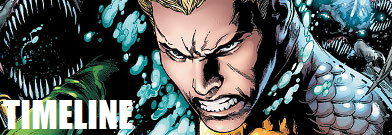
An ever-updating list as CS’s are approved and events are mentioned or occur during the course of the role-play. This will be the best chronological fact-check database for the thread assuming we don’t attempt to compile these into a proper wiki. Any questions should be directed towards us if things are not clear.

"Advanced roleplaying should focus on developing interesting and complex characters that become part of plot-lines which catch the imagination and inspire the writer behind them to exercise creativity. It is mature, humorous, imaginative, tragic, terrifying, passionate, and rife with descriptive language and characters with real personality and relatable cares. Quality posting is far better than needless novels, yet one should never neglect detail when one feels the need. However, while word and paragraph requirements ought to be unnecessary, single paragraphs cannot contain enough detail to suffice."
Below are a set few rules guidelines to play by:
You may choose any character appearing in the continuities that envelope Western comics books though the core of the game is DC/Marvel. You can include aspects of the Bruce Timm continuity, Wildstorm, the Cinematic Universe(s), and so forth. Characters from Dark Horse, Image, IDW, and similar prints will be accepted, but we will be selective about approval regarding such.
Character creation will start at one character and may be increased given the GM staff finds said writer able to handle more characters or has sufficient creative drive. In previous games we’ve had a lot of “concepts” but rarely were they actively written.
Try to select a "parent character" or a "solo character". Do not select a villain that for example, belongs to a rogues gallery of a parent character. While the allure of an antagonist is great and interesting, there will be no POVing a major villain who is part of a rogues gallery (ie: Joker to Batman) unless that parent hero is being played.
Travel involving time, dimensional multiverses, or any other concepts would be on a GM-approved basis.
Please do not kill player-created characters or important NPC’s unless given the go-ahead to do so.
Do not impose on arcs without asking for permission; don’t jump into a scene for the sake of interaction; your characters should have sufficient reasoning to want to be in a cooperative scene and noting that— do be courteous and respectful about approaching or possibly interfering in character arcs. While this is more a suggestion then a rule, we should be courteous to those who are planning arcs. Communication is the key.
Infinite Crisis/Elseworlds Stories – not happening, don’t even ask.
Please refrain from having your character perform any random game-changing actions; no one likes waking up to find that a player has had their character destroy the moon, least of all the population of Attilan. Only perform actions that your character can do and would do on paper.
Respect the GM staff and their authority.
Be creative.
Competing applications of characters have a 20 hour limit to be presented and from there the moderation staff will decide who fits better or if at all.
Notes are an optional and malleable part of your CS’s – just because I have plans for Harvey Dent as the Batman player does not mean I can’t retrofit those plans to accommodate your interest in playing that character or characters related to them. Notes should be used as guides and pre-cautionary plans or pre-established lore points and do not mean to rule the role-play by disallowing concepts. Again, communicate.
Legacies (NPCs, sidekicks, rogues) fall under the jurisdiction of the hero they are traditionally designed around. If you want to play The Joker, The Batman player has to be okay with it and your information should never contradict what they have written in their CS. This one is malleable, but again—communicate. .
No post should be made that contradicts the host website's rules, so keep those in mind.
Activity will be left vague as social obligations such as employment, academics, and so forth take precedent over a shared hobby. But we should at least have a post for every fifteen days. Obligations will be reminded by the staff, but this is a low stress endeavor so we shouldn't feel the need to make extreme demands regarding this.
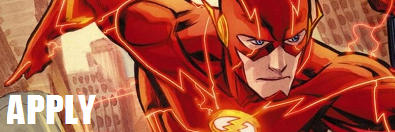
This is important. Applications should be posted in the main OOC or PMed to the GMs, ONLY approved characters should be posted in the character database tab.
